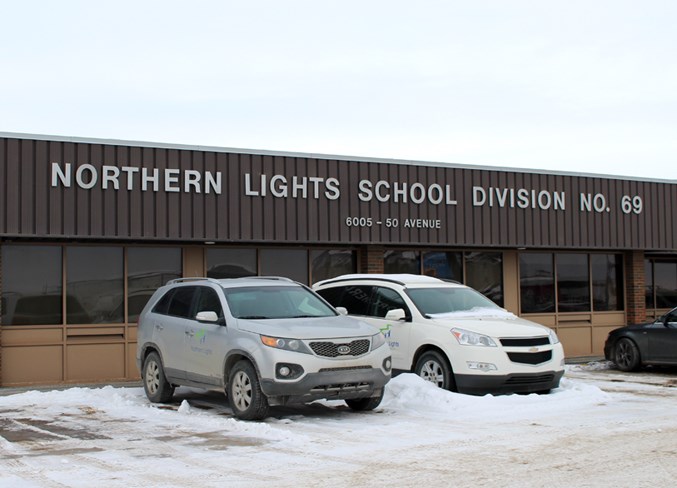After the provincial government’s recent ban on seclusion rooms, Northern Lights Public Schools (NLPS) are ensuring they’re in compliance with the decision.
During their March 6 board meeting, superintendent Rick Cusson noted that NLPS doesn’t have any rooms that fall under the definition that was provided. However, they do have sensory rooms to assist students who need to take a moment to calm down.
“I think we’ve got some work to do on the administration side of things to make sure that we’re in compliance with this, which I strongly believe we’re at this point. But, the other side of it is we’ll have to make sure we’re working with our staff if we’re going to continue the practice of self-regulation rooms for students, or potentially sensory rooms for our students, because those aren’t included in the seclusion rooms (definition),” he detailed.
A seclusion room is a room, structure, or enclosed area in a school that a student may be involuntary confined or isolated in. If an emergency situation did occur, a child placed in these areas couldn’t leave, due to the security measures put in place, without assistance.
The ban will take effect on Sept. 1. The decision comes after a group was formed to advise the provincial government on new guidelines for seclusion rooms.
A sensory room, on the other hand, is a space meant to give children a calming area to reset and self-regulate enough to head back to class.
Boards are required to submit a list of schools that may have spaces considered isolation rooms, and a representative from Alberta Education will perform on-site inspections to ensure the rule is being followed.
Ahead of the inspections, NLPS is reaching out to their schools to ensure the spaces they do have don’t fall under the definition.
“We’re taking it as an opportunity to reflect and learn about our practices,” explained Jimmi Lou Irvine, associate superintendent for NLPS. “To confirm what the most appropriate responses are to students that may need those calming spaces and that time to reset.”
Trustee Garry Kissel said, “I think a lot of it has to do with these kids can’t be locked up. We can have time out rooms, but you can’t lock them, and places have locked them. The one I dealt with, we called it a time out room, the kids were never locked in there and there was never a lock on the door. The kids could escape, it was under adult supervision, but that’s a lot different to me than locking them in.”
Irvine noted it’s not the actual space that’s an issue, but how some have been utilized.
“That’s what we have to be cognizant of, and that relies on the human element. It’s not the physical space of (what) we have or don’t have. Do we have people that are employed or trained to use that space in an appropriate manner?” Irvine said, adding she believes they have a number of staff trained to know the correct ways to handle these situations.
Trustee Ron Young worried what this ban could mean for students who need a space to reset.
“The point that bothers me is sensory rooms are definitely the best thing in the world, and they prevent the situation from... happening in the first place. The word sensory and the word seclusion are just too close together in the alphabet, and I certainly hope we make as strong of use as we can of sensory rooms to help these kids.”
Irvine stressed the importance of supporting their students who may need the sensory rooms during the day.
“The fear is without appropriate spaces to reset and calm students, parents will be called and asked to pick them up. In our minds, that would be a step backwards... That’s why we want to ensure that this doesn’t become the default and that parents aren’t called at all times and hours when they expect their child will be in school for the day.”



